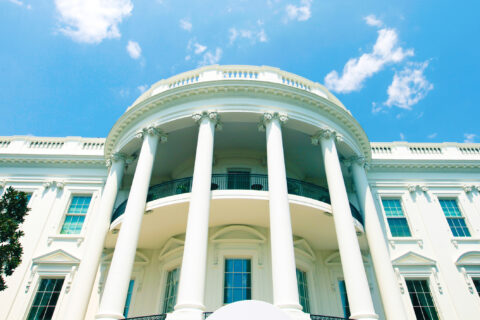Authored by Risa Wilkerson, Executive Director of Healthy Places by Design
The need for strong mental health has never been greater, but there are now clear actions municipal leaders can take to help their residents. Community-level approaches that focus on reducing social isolation and building social connections play a crucial role in mental health. Social connections create feelings of belonging and being valued, which are essential for human flourishing and well-being. Research shows that strong social bonds can protect against serious mental and physical health issues, and individuals with better social connections tend to live longer, healthier lives. Additionally, social isolation and loneliness are linked to increased risks of mental health conditions, highlighting the importance of maintaining relationships. Engaging in social interactions not only enhances emotional well-being but also contributes positively to brain health.
Why Does Mental Health Matter to Cities?
Cities that foster social connections can reap numerous benefits, including:
- Stronger Trust: Enhanced connection and collaboration build trust among residents and between them and local government. This makes residents more likely to participate in addressing local issues and strengthens greater civic participation.
- Better Health: Better social connections lead to improved resident mental and physical health, positively impacting the workforce and healthcare systems.
- Improved Safety: Socially connected cities have lower rates of crime and violence; their residents feel safer and are more likely to collectively take action to take care of each other and prevent crime.
- More Resiliency: When people feel an emotional connection to their community, the local economy grows and is more resilient against economic downturns. It also helps people be more prepared for and recover from emergencies and unexpected crises.
What Can Cities Do to Improve Mental Health and Social Connection?
Social connectedness can be integrated into community-level strategies that address root causes of poor health and social isolation. Here are five steps city leaders can take. Explore them further in Healthy Places by Design’s Socially Connected Communities: Solutions to Social Isolation (PDF) report.
- Design, Maintain and Activate Inclusive Public Spaces: When designed and managed well, public spaces provide residents with accessible places to interact with each other and their government, experience cultural activities, access nature and gain a sense of belonging. Cities can co-create public spaces with residents to ensure they are inclusive, healthy and safe for all ages. This includes maintaining their quality and ensuring access regardless of weather as well as supporting activation strategies for healthy social interaction through hosting programs and events.
- Prioritize Connection in Transportation Systems: Safe, accessible and affordable transportation options connect people to jobs, education, health care, childcare, social services and other critical resources that foster social connection. Public transportation, walking and bicycling networks can provide opportunities for meeting others, starting conversations and building trust in neighbors and institutions. By investing in these networks and other elements that enhance public life — like walking school bus programs (a supervised group of children walking to school together) and play streets (temporarily closing sections of streets for play) — cities can cultivate stronger communities and a greater sense of belonging.
- Construct Housing Environments That Build Community: As city leaders consider the design of housing developments, they can co-locate community centers, green spaces, neighborhood parks, playgrounds and dog parks nearby to draw people together. Mixed-use developments improve access to various services and resources, which reduces transportation-related challenges and typically increases street-level activity. Increased activity on streets improves safety and provides opportunities for spontaneous interaction with others.
- Invest in Inclusive Practices and Community-Led Solutions: When designing places, programs or policies, include the people for whom those efforts are intended: your constituents. This helps to align solutions with community or cultural values and builds trust in government leaders. Meaningful community engagement can strengthen a sense of belonging for residents. There are many ways cities can engage residents meaningfully, such as incorporating practices and policies that increase participation opportunities (i.e., childcare, transportation, meals) in public input processes. This may also look like partnering with grassroots and nonprofit organizations that have established relationships in the community and can elevate practices rooted in culture.
- Make Social Connectedness a Community Norm: All sectors have a role to play, and their efforts become more effective when social connectedness is a community-wide priority and norm. City leaders can pair a Social in All Policies framework with approaches that are trauma- and resilience-informed. Such efforts are responsive to lived experiences and open the door for conversations about co-creating a shared vision for a future where everyone experiences absolute belonging and well-being.
What Success Looks Like
The opportunities for city leaders to strengthen social connections are endless. By embracing and building upon these five action steps, cities can combat social isolation and build stronger, healthier communities for all. Below are four examples of projects supported by local government that support social connection.
Boston, MA
Activating Boston aims to build and support social connections, health, and well-being in four city neighborhoods. The initiative is funded by John Hancock and led by Boston’s Age Strong Commission and other city agencies, AARP of Massachusetts and Healthy Places by Design. In all four neighborhoods — Chinatown, Dorchester, Grove Hall and East Boston — city leaders are supporting resident-led efforts to improve parks and vacant land into inclusive public spaces that foster intergenerational social connection.
Gastonia, NC
In Gastonia, NC, the Community-Centered Health (CCH) initiative led to advocacy, collaboration and ultimately city investment in parks and community spaces in a historically African American neighborhood. Funded by the Blue Cross and Blue Shield of North Carolina Foundation, this work brought together health clinics, community organizations and city leaders to prioritize issues and solutions most important to the community. Through this process, African American residents expressed how it felt to live near the only neighborhood park in the city that didn’t have outdoor restrooms — which residents had been requesting for over fifty years. Their advocacy and continued work with partners resulted in the City of Gastonia investing over $2 million in the Highland community to build new affordable homes, high-visibility crosswalks, a children’s splash park, improved streetlights and — finally — outdoor restrooms in the park.
Visit the NLC Strategic Partnerships page to learn more about the organizations like Healthy Places by Design dedicated to making NLC the premier resource for local governments.
What You Need to Know About Social Isolation
Learn more about the impacts of social isolation and how local government can work to make their communities feel more socially connected.







